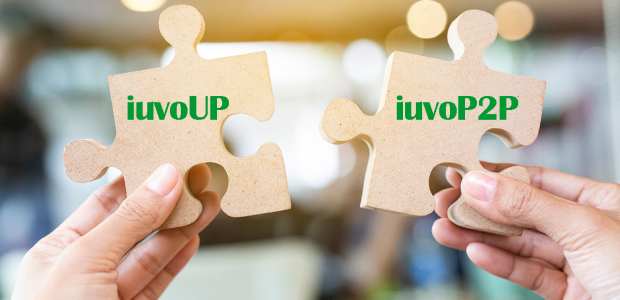The most rewarding part about investing at iuvo is, of course, the moment you get to see your returns. As satisfying as it is to look at your account balance growing, you shouldn’t settle for just making sure that you’re earning something. It’s a good idea to regularly go through your Dashboard and your Account Statement for insight on how much you’re earning, and where it’s coming from. Keeping track of your returns’ size and origin can help you build your future investment strategies. Furthermore, collecting this information (and being precise about it) is especially important once you have to calculate and declare your income taxes.
What, where, how?
You can see an overview of your returns by going to your Dashboard. It represents a summary of all payments you receive, sorted by currency type. For a detailed breakdown of all incoming transactions, you can check your Account Statement. Payments you receive are calculated with an accuracy of 10 digits after the decimal point. However, for tidiness’ sake, we only display two digits after the decimal point.
We understand that the Account Statement might look a little confusing at first, but once you get the gist of it – it becomes effortless to analyze. To make it even simpler for you, we’ve prepared an overview of what kinds of payments you can expect to see.
Returns from loans you’ve invested in
When you invest in a loan from the primary market, your return flow depends on specific vital factors, such as:
– The agreed payment plan;
– What percentage of the loan you’ve invested in;
– Whether the borrower is keeping up with payments (or being late… or paying at all);
– Whether the borrower decides to make an early payment.
Regardless of the scenario, some rules always apply. For example, you get paid as soon as the originator receives a payment from the borrower, i.e., with each scheduled installment. Also, you will always get your returns from the interest and your returns from the principal, as two separate payments.
To illustrate your returns payments, let’s take an exemplary loan with duration of 12 months, and a 30-day installment plan. There are three possible scenarios:
A/ The borrower pays on time each month
In this case, you get paid once a month for twelve months. In your account statement, you will see two incoming transactions, as mentioned above.
B/ The borrower is late with their payment or doesn’t pay at all
Each originator charges borrowers a fee once their payment is overdue with more than 20 days. These fees vary in size and accrual period between originators. Your returns will directly depend on the percentage you hold from each loan.
If the borrower fails to make a payment, you are protected by the Buy-back guarantee. Once this guarantee is activated, you will be refunded with the remainder of the unpaid principal. These funds will go straight back to your account. The Buy-back guarantee does not cover the rest of the outstanding interest.
C/ The borrower decides to do an early repayment
Let’s say three months have passed, and the borrower chooses to pay the remaining nine installments all at once. In this scenario, you will receive the remainder of the unpaid principal, split into nine separate monthly payments per the pre-set installment schedule.
You will also receive a one-off payment for the current installment’s interest. Since we’re talking about an early repayment case, no interest will be accumulated anymore. That means you will stop getting interest rate for this loan – you will only get returns from the unpaid principal.
Returns from selling and buying loans on the secondary market
In the secondary market, you can get two types of returns:
A/ Selling loans for a higher value than what you invested
If you feel like a certain loan in your portfolio might be attractive for other investors, you can sell it at a higher price than your original investment. Having done that, you will receive two payments – one equal to the nominal value of the loan, and one equal to the premium/discount amount.
B/ Buying loans at a discounted price
In this case, you will start receiving payments according to the agreed installment plan for each loan. Again, you will see two payments in your account statement – one for the principal, and one for the interest.
Conclusion
This overview should help you better understand your returns size and origin. If you need further information, you can always check our FAQ section or contact our Customer Support associates at [email protected]. Invest away!
 en
en 







